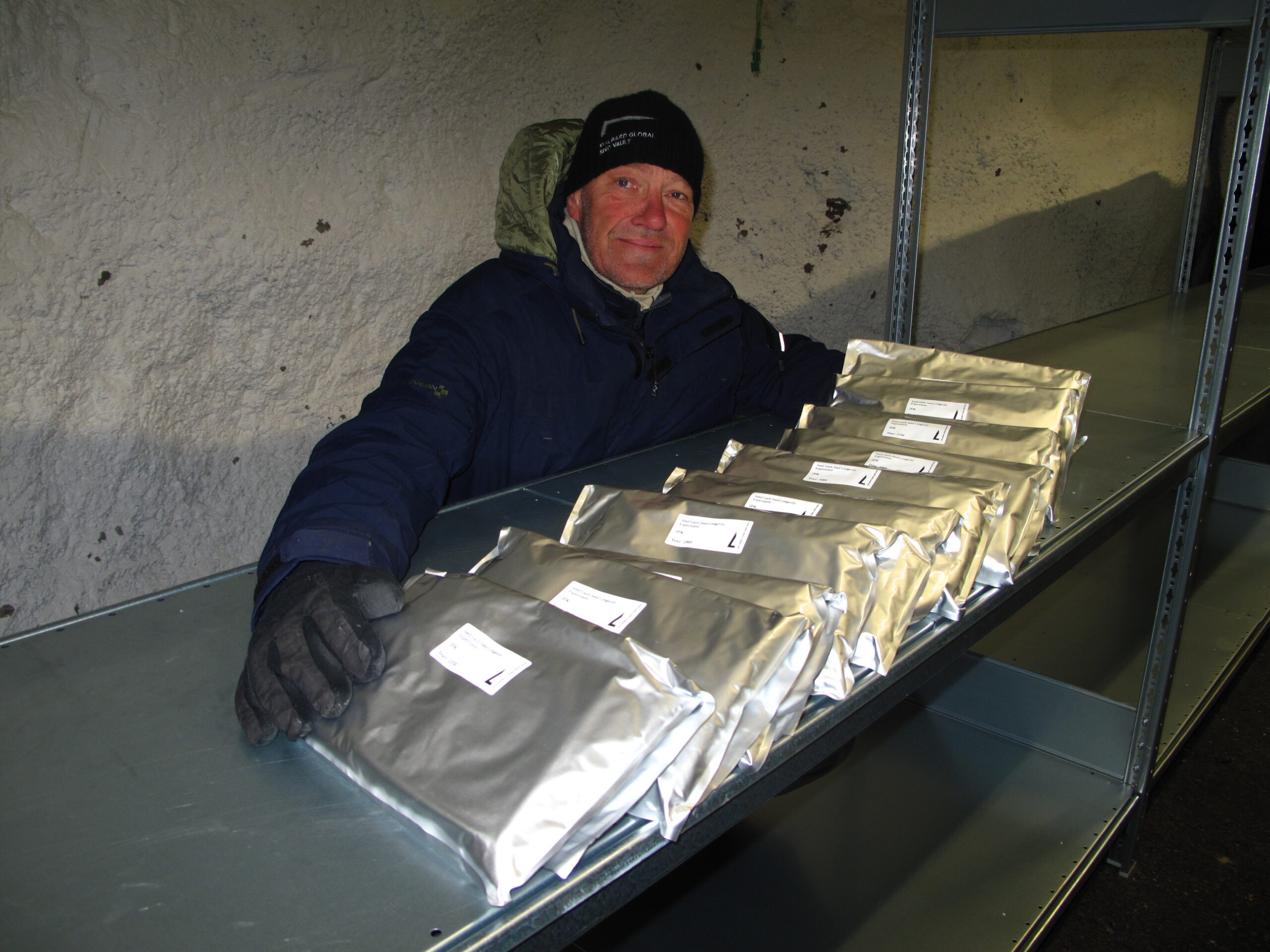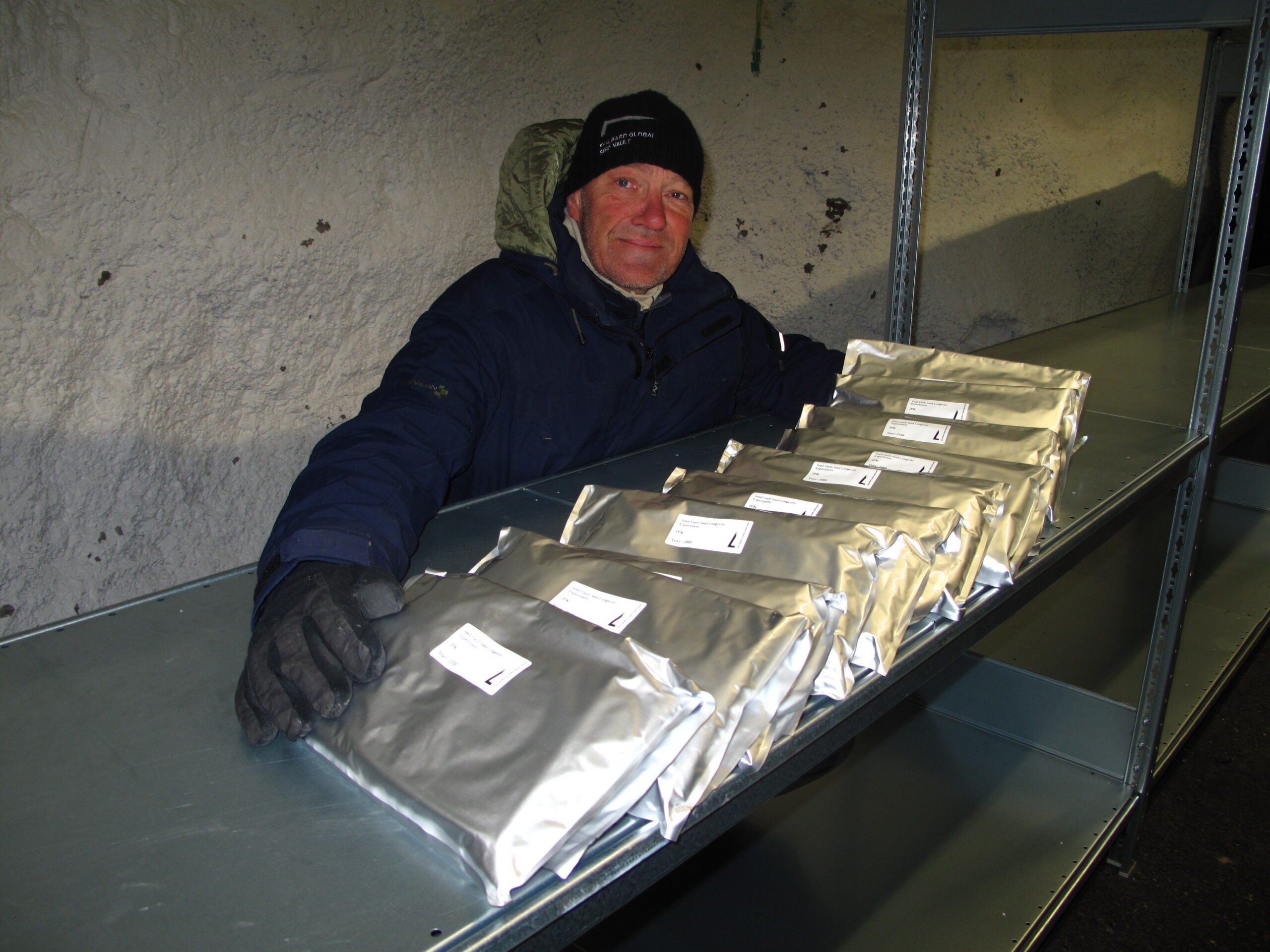

The first experimental seed samples will be brought into the Svalbard Global Seed Vault on the 27th of August. These first test sets consist of seeds from barley, pea, wheat and lettuce, produced at the German genebank IPK in Gatersleben. During the following 2-3 years, seeds from nine additional crops will be produced and put into the –18°C seed storage in Svalbard. The seeds will be provided by project partners that are highly ranked genebanks and research institutes from all parts of the world. These have already taken advantage of the opportunity to deposit security duplicates of their valuable seed collections in the Svalbard Global Seed Vault.
“This experiment is one of its kind. It will provide future generations with valuable information about seed viability and more precise knowledge of how often seeds need to be regenerated,” said Åsmund Asdal, Seed Vault Coordinator at Nordic Genetic Resource Center (NordGen), the genebank responsible for managing the project.
Unknown germination abilities
The main principle for conserving seeds is that well dried and frozen seeds from many important food crops can stay alive for a very long time. Exactly for how long seeds can maintain the germination ability after storage under optimal conditions has not been fully explored. But it is assumed that seeds of most species can stay viable for centuries, while some may even survive for more than a thousand years. The experiment is funded by the Norwegian Ministry of Agriculture and Food as part of the annual work plan and budget for the management and operations of the Svalbard Global Seed Vault.
Regeneration of seeds needed
Genebanks test seeds in their collections regularly, to be able to regenerate seeds in time and keep the genetic resources contained in the seeds viable and available for research and plant breeding. Increased knowledge about how long seeds can stay alive will be extremely useful for genebanks, and also for the management of the Svalbard Global Seed Vault, which is a facility where genebanks can store duplicates of their primary seed collections as a security in case seeds are lost at home.
The first experiment seeds that are put into the Seed Vault now will be tested in 2030 and then identical seed samples will be tested every ten years until 2120, 100 years from now. Results and reports from the project will be published throughout the whole project period, adding knowledge to management routines and guidelines, both for seed conservation in regular genebanks and for the long-term conservation of seeds in the Seed Vault.
The partners in the project are:
- The National Rice Seed Storage Laboratory for Genetic Resources (NRSSL) in Thailand
- The International Crop Research Institute for the Semi-Arid Tropics (ICRISAT) in India
- Instituto Nacional de Investigação Agrária, (INIAV) in Portugal
- Empresa Brasileira de Pesquisa Agropecuária (Embrapa) in Brazil
- The Leibniz Institute of Plant Genetics and Crop Plant Research (IPK) in Germany
- Nordic Genetic Resource Centre (NordGen) in Sweden, also managing the project.
The crops included in the experiment are:
- Barley
- Pea
- Wheat
- Lettuce
- Rice
- Maize
- Chickpea
- Soybean
- Groundnut
- Pearl millet
- Pigeon pea
- Cabbage
- Timothy
Svalbard Global Seed Vault is a backup facility for the world’s crop diversity. It was inaugurated in 2008 and is owned and managed by Norway. The Seed Vault is operated in a partnership between the Norwegian Ministry of Agriculture and Food; NordGen, – the regional genebank for the Nordic countries, and the international organization Crop Trust. So far, more than 1 million seed samples from 87 different institutes and organizations have been deposited in the Seed Vault for safe, free-of-charge and long-term storage. Find more information at the official webpage www.seedvault.no.
For more information, please contact:
Åsmund Asdal
Seed Vault Coordinator, NordGen
+47 91 36 51 66
asmund.asdal@nordgen.org
